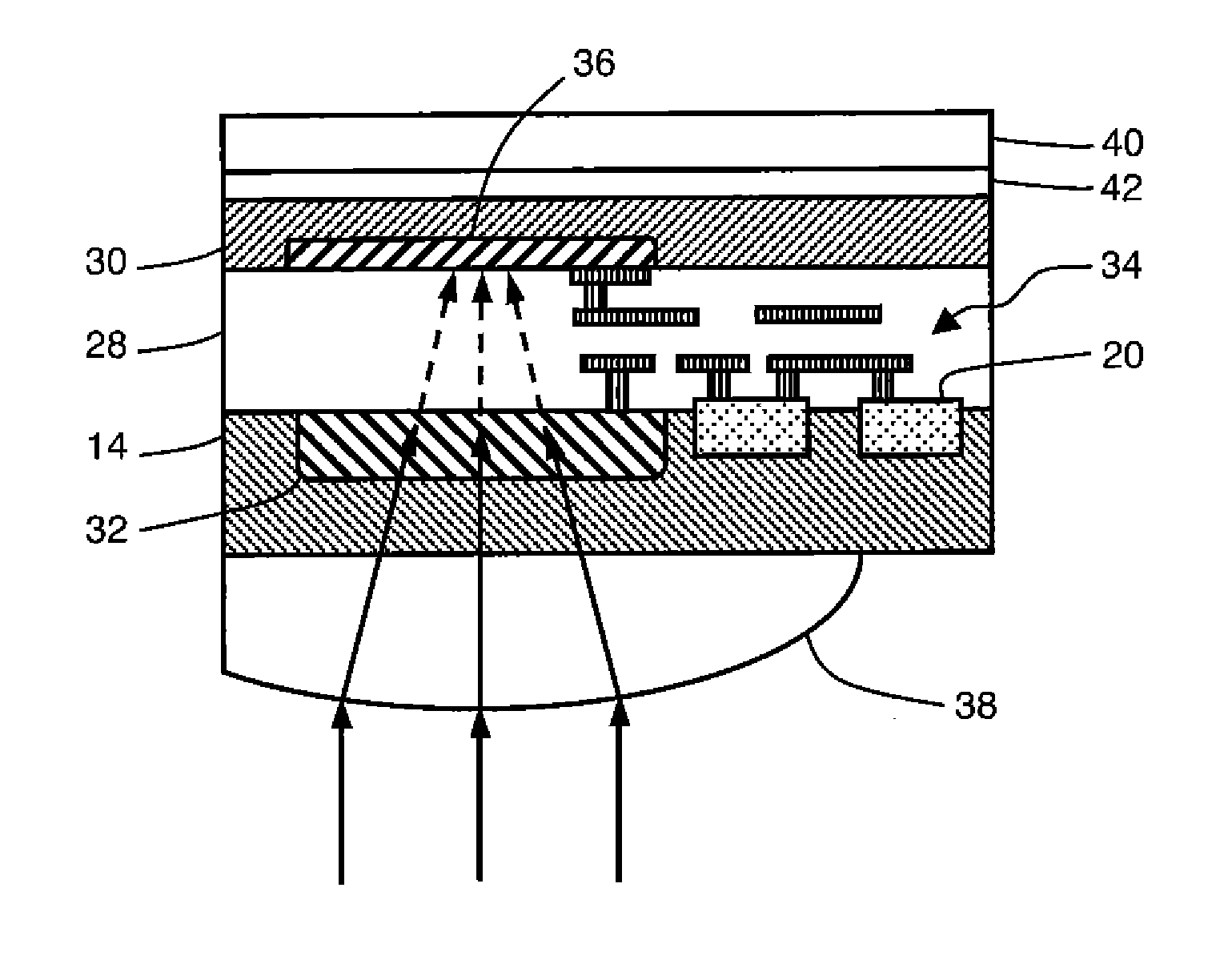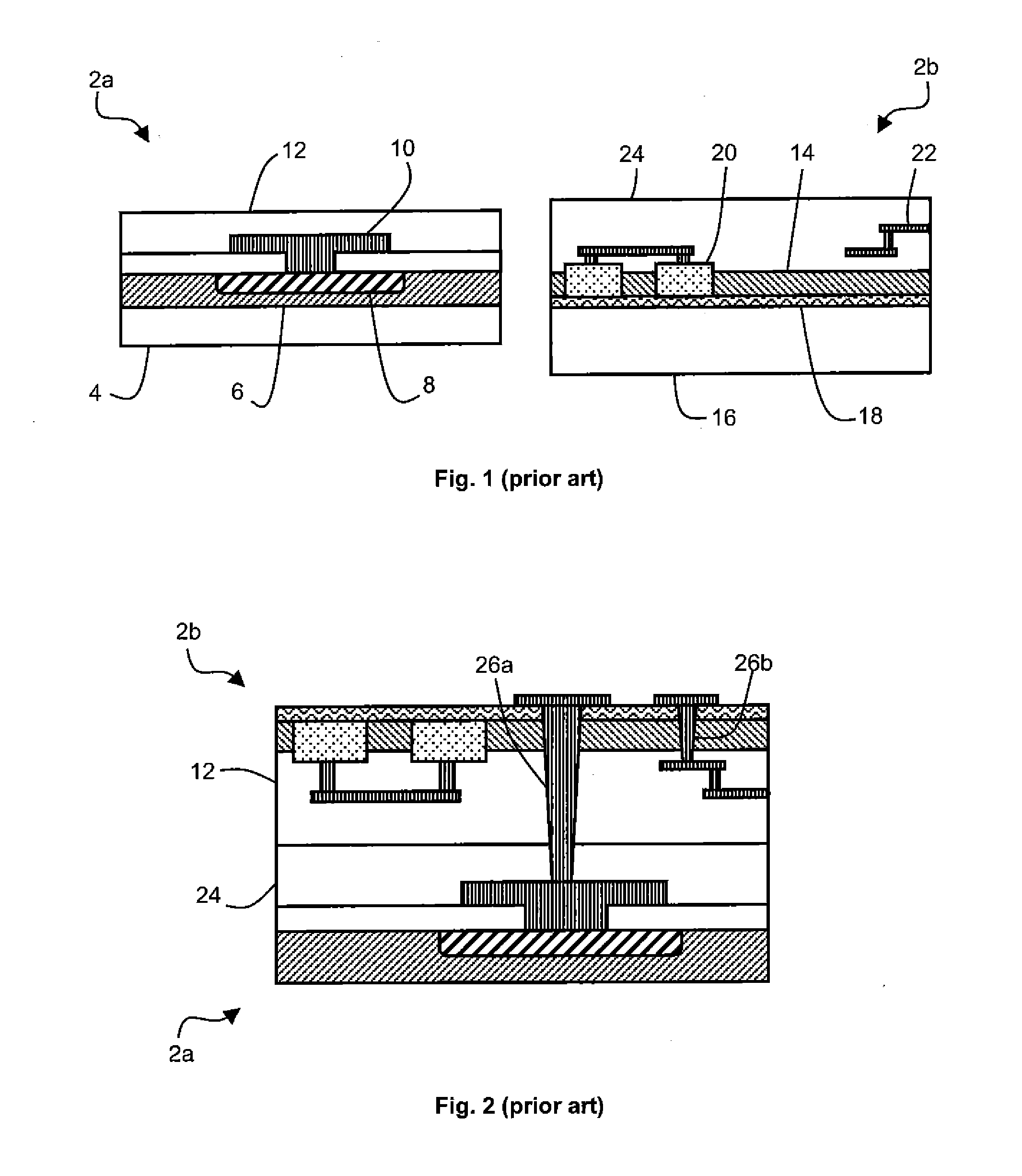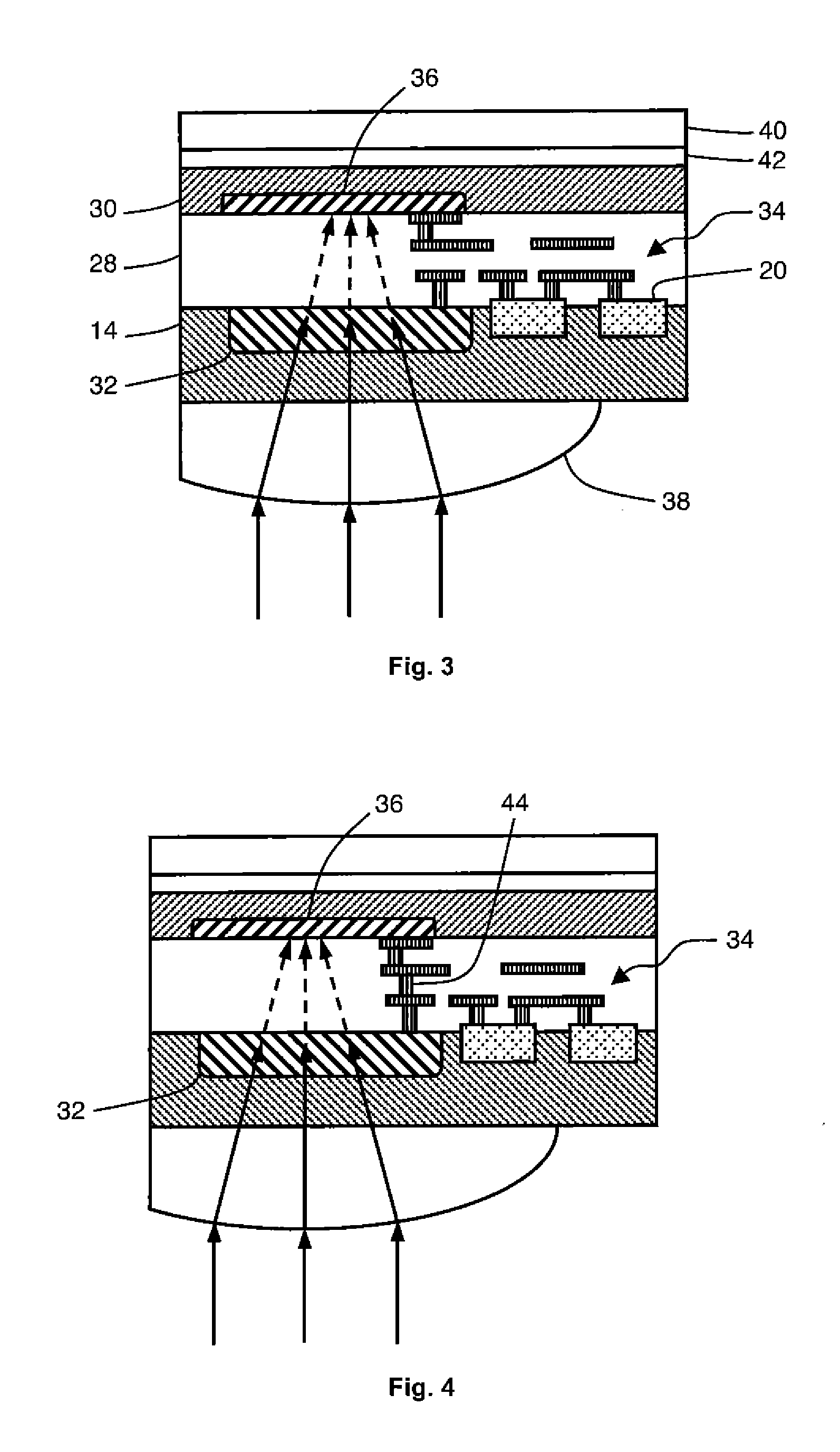Visible and near-infrared radiation detector
- Summary
- Abstract
- Description
- Claims
- Application Information
AI Technical Summary
Benefits of technology
Problems solved by technology
Method used
Image
Examples
first embodiment
[0038]FIG. 3 schematically represents a detector of visible and near-infrared radiation. The detector successively comprises a silicon substrate 14, an interconnect layer 28, and a substrate 30 comprising at least one layer optimized for the detection of near-infrared radiation.
[0039]Silicon substrate 14 comprises a photodiode 32 and transistors 20. Transistors 20 are formed on a frontside of substrate 14 and covered with interconnect layer 28. Layer 28 is formed of metal tracks embedded in a dielectric material transparent to infrared radiation, for example, an oxide layer of PSG type (PSG, “Phosphosilicate glass”). The metal tracks interconnect transistors 20 and electrically connect them to photodiode 32 to form a readout circuit 34 of photodiode 32.
[0040]Substrate 30 preferably comprises a stack of layers made of materials sensitive to near-infrared to form a photodiode 36. The stack for example comprises an n-type doped InP layer, an intrinsic InGaAs absorption layer, and a p-t...
second embodiment
[0054]FIG. 6 represents a visible and near-infrared radiation detector enabling to obtain color in the visible spectrum. The detector comprises a pixel quadruplet. A first pixel 46 comprises a visible photodiode 32, a NIR photodiode 36, and a readout circuit 34. Pixel 46 thus corresponds to the detector of FIG. 3 or 4. The three other pixels 48a, 48b, and 48c each comprise a visible photodiode 32 and an associated readout circuit 34. Pixels 48a, 48b, and 48c are respectively provided with filters 50a-50c associated with the three elementary colors, for example, red (50a), blue (50b), and green (50c). Color filters 50a-50c are arranged between the incident radiation and photodiodes 32, on the backside of substrate 14.
[0055]In a conventional silicon color imager, the filter at the level of each pixel is generally made of a pigmented resin. This type of filter transmits part of the visible radiation but also a significant part of the near-infrared radiation to which silicon photodiodes...
PUM
 Login to View More
Login to View More Abstract
Description
Claims
Application Information
 Login to View More
Login to View More - R&D
- Intellectual Property
- Life Sciences
- Materials
- Tech Scout
- Unparalleled Data Quality
- Higher Quality Content
- 60% Fewer Hallucinations
Browse by: Latest US Patents, China's latest patents, Technical Efficacy Thesaurus, Application Domain, Technology Topic, Popular Technical Reports.
© 2025 PatSnap. All rights reserved.Legal|Privacy policy|Modern Slavery Act Transparency Statement|Sitemap|About US| Contact US: help@patsnap.com



